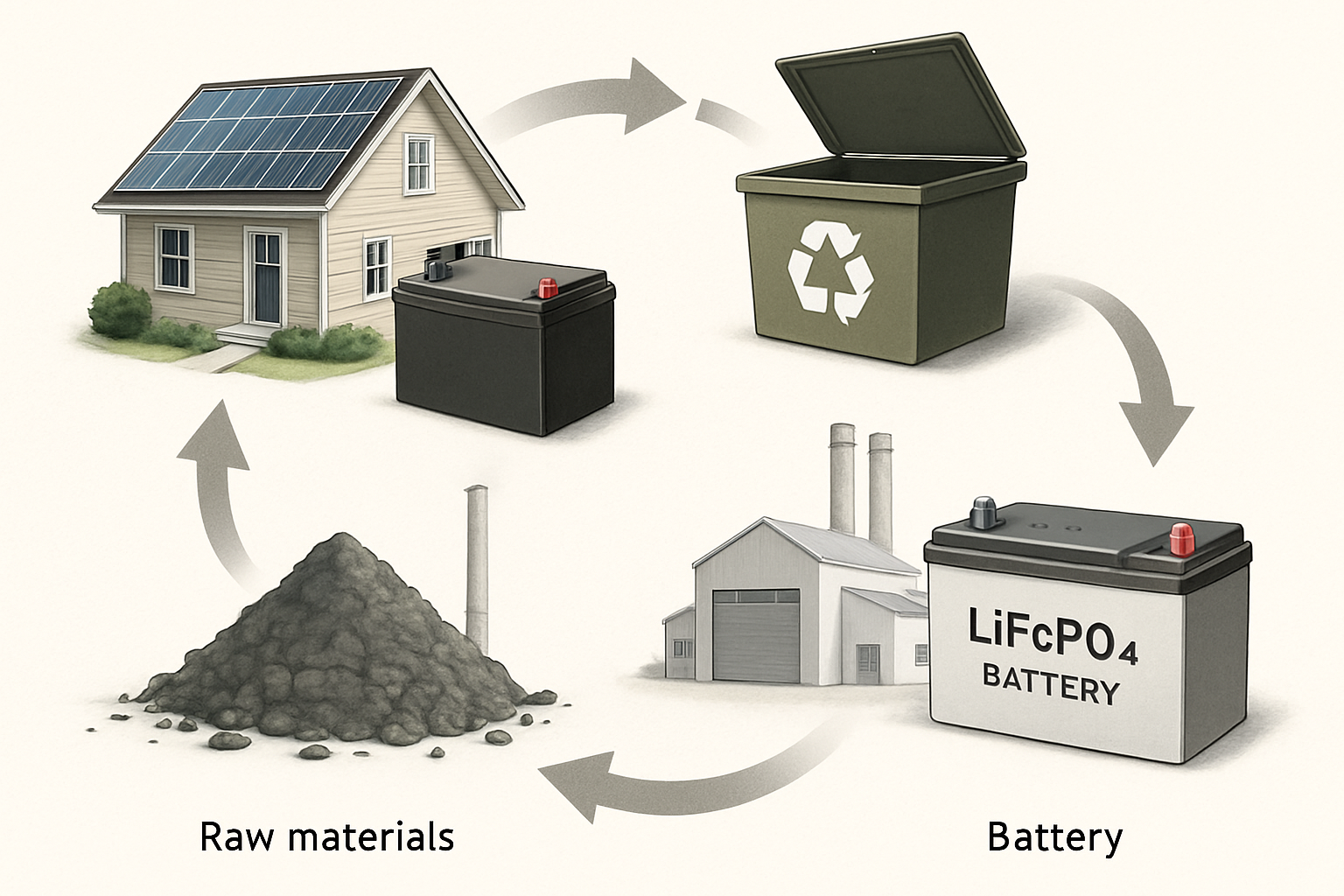Home battery storage is a cornerstone of modern energy independence. As more households adopt this technology, the European Union is implementing comprehensive regulations to ensure these systems are sustainable, transparent, and managed responsibly throughout their entire lifecycle. The new EU Batteries Regulation (EU) 2023/1542, which entered into force in February 2024, replaces older directives and sets a new global standard for the battery industry. For homeowners, these changes bring greater clarity and empower more sustainable energy choices.

Understanding the New EU Batteries Regulation
The updated regulation is a key part of the European Green Deal and aims to create a circular economy for batteries. It's the first piece of legislation to cover the entire life cycle of a product, from the sourcing of raw materials to design, use, and end-of-life recycling. This holistic approach ensures that the environmental impact is minimized at every stage.
A Shift Towards Sustainability and Transparency
The core objective of Regulation (EU) 2023/1542 is to harmonize the rules across all member states, creating a single, predictable framework. This promotes fair competition and ensures all batteries on the market meet high sustainability and safety standards. The regulation moves beyond just waste management to address the entire value chain, including responsible sourcing of materials and mandating the use of recycled content in new batteries.
Key Objectives for the Energy Sector
The regulation's goals are ambitious and designed to strengthen the EU's clean energy ecosystem. Key objectives include:
- Promoting a circular economy by increasing the collection and recycling of used batteries.
- Reducing the environmental and social impact of the battery industry through strict due diligence and carbon footprint tracking.
- Enhancing the internal market by establishing uniform rules for all operators.
- Supporting the broader goals of the Energy Technology Perspectives 2024, which emphasizes scaling up clean energy manufacturing and securing essential raw materials.
How the Rules Impact Your Home Battery Storage
As a homeowner, you will see the effects of these new rules in the products you buy and the information available to you. The regulation empowers consumers with greater transparency, helping you make informed decisions that align with your environmental values.
The Carbon Footprint Declaration
One of the most significant changes is the mandatory carbon footprint declaration for rechargeable industrial batteries with a capacity greater than 2 kWh, which includes home storage systems. Manufacturers must calculate and disclose the total carbon footprint of each battery model per manufacturing plant. This information will become progressively available, allowing you to compare the environmental performance of different products before making a purchase.
Mandatory Recycled Content
To drive the market for recycled materials, the regulation sets mandatory minimum levels of recycled content in new industrial and EV batteries. This reduces the need for mining new raw materials and lowers the overall environmental impact. While the initial targets are set, they are scheduled to increase over time, pushing the industry toward greater circularity.
| Material | Minimum Recycled Content (from 2031) | Minimum Recycled Content (from 2036) |
|---|---|---|
| Cobalt | 16% | 26% |
| Lead | 85% | 85% |
| Lithium | 6% | 12% |
| Nickel | 6% | 15% |
Note: These targets illustrate the EU's commitment to increasing the use of recycled materials in new batteries over time.
The 'Battery Passport' and QR Codes
Starting in February 2027, industrial batteries over 2 kWh must have a digital "Battery Passport". This electronic record will be accessible via a QR code printed on the battery. The passport will provide a wealth of information, including:
- General product and manufacturer details.
- Data on the battery's carbon footprint.
- Information on the origin of materials and recycled content.
- Details on performance, durability, and safe handling.
This digital tool gives you unprecedented access to the history and impact of your energy storage system.
Your Role in Battery Recycling and Disposal
While the new rules place significant obligations on manufacturers, homeowners also have a crucial role. Proper end-of-life management is essential to closing the loop and protecting the environment.
Understanding Extended Producer Responsibility (EPR)
A central pillar of the regulation is Extended Producer Responsibility (EPR). This principle makes the producer—the company that first places the battery on the market—financially and logistically responsible for its end-of-life management. For you, this means the cost of collecting and recycling your old home battery is covered by the manufacturer. You are not expected to bear this cost directly.
Collection and Recycling Processes
You should never dispose of a home storage battery in regular municipal waste. When your battery reaches the end of its operational life, your first point of contact should be the original installer or the manufacturer. Under EPR, they are obligated to provide a take-back solution and ensure the battery is sent to a certified treatment facility. These facilities must meet high recycling efficiency targets to recover valuable materials like lithium, cobalt, and nickel.
Disclaimer
This content is for informational purposes only and does not constitute legal advice. Homeowners should consult with their installer or the battery manufacturer for specific guidance on their obligations and the proper procedures for battery disposal.
A More Sustainable Energy Future
The EU's new battery regulations represent a major step forward in creating a sustainable and transparent energy storage market. By covering the entire product lifecycle, these rules ensure that the batteries powering our homes are produced, used, and recycled responsibly. For homeowners, this translates into more informed choices, greater accountability from manufacturers, and the assurance that your investment in energy independence also supports a healthier planet and a robust circular economy.
Frequently Asked Questions
Do these rules apply to batteries I already own?
Requirements like the carbon footprint declaration and the digital battery passport apply to new batteries placed on the market after specific deadlines. However, the end-of-life obligations under Extended Producer Responsibility (EPR) apply to all batteries, ensuring that even your existing system will be managed responsibly when it needs to be replaced.
Who is responsible for recycling my home battery?
Under the EPR principle, the battery's manufacturer is responsible for financing and organizing the collection and recycling of your used battery. You should contact your installer or the manufacturer to initiate the take-back process.
What is a battery passport?
The battery passport is a digital record, accessible via a QR code, that will provide detailed information about your battery. This includes its manufacturing history, material composition, state of health, and carbon footprint. This requirement will be implemented from February 2027 for industrial batteries over 2 kWh.
How do I know if a new battery complies with these regulations?
Compliant batteries must carry the CE marking, which certifies they meet EU safety, health, and environmental protection requirements. As the rules phase in, they will also feature labels with carbon footprint information and a QR code linking to the digital passport. Always purchase from reputable suppliers who can confirm compliance with the latest EU battery rules.





Leave a comment
All comments are moderated before being published.
This site is protected by hCaptcha and the hCaptcha Privacy Policy and Terms of Service apply.